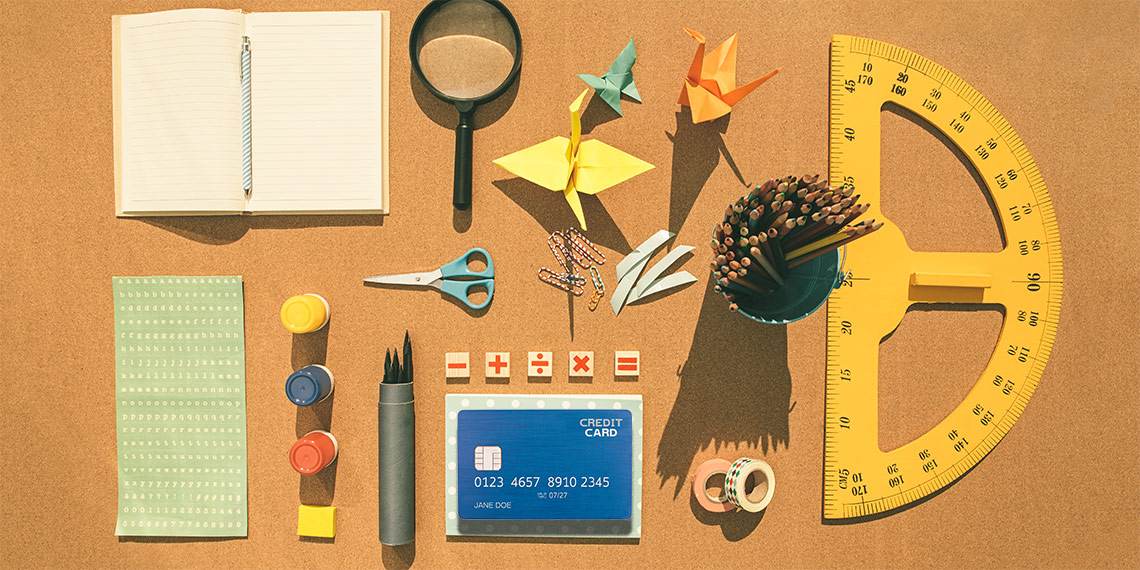
A young adult’s first credit card is a financial rite of passage, but it won’t come with a user’s manual. Setting your children on the right path to building credit and using credit cards wisely is a smart parenting move. Here’s how to help your child develop the personal finance skills and knowhow to become a credit-savvy adult.
Discuss How Credit Works, and Why It’s Important
Credit cards are more than just a way to pay for things—but your kids might not understand that. Talk them through the basics of money management by showing them a statement and defining all the terms: annual percentage rate (APR), statement balance, credit limit, available credit, minimum payment due, etc.
Explain the fees related to the credit card account, and that if you don’t pay off your balance in full every month, how interest will affect the balance.
Once they understand the mechanics of how credit cards work, explain credit scores and how they can influence your ability to take out a loan, get a mortgage, rent an apartment or even get utilities in your name. A good credit rating is essential throughout your life, so impress upon your child the importance of building credit and staying in good standing.
Start Small
Experts advise taking a training-wheels approach before you give your kid a full-fledged credit card, and the corresponding ability to make a major financial mistake. First, set up a debit card or a prepaid debit card with a specific amount that your kid can spend over a period of time. For example, you could give a middle-schooler a debit card with their clothing allowance for six months. The reasoning here is that if they make a mistake—or go a little wild—you’re limiting the size of the financial fallout. Once your child demonstrates responsible spending and good credit habits, you can move them to a credit card.
Choose a Secured Card
With a secured credit card, you get a credit limit that corresponds to a deposit. For a $500 deposit, you’ll get a $500 credit limit. As she spends and then pays back the money, your child will demonstrate fiscal responsibility—and will learn that having a credit card does not equal spending without limits. The advantage of a secured card is that your child is building a credit history by using the card, unlike with debit or prepaid cards. After a period of time, a bank will likely graduate your child to an unsecured credit card.
Limit the Number of Cards
Having a wallet full of credit cards may create a hard-to-track pile of payments, a lack of awareness of the total credit card balance due at any given moment, or simply too much temptation. Using multiple cards irresponsibly will hurt your child’s credit score, as will applying for too many credit cards in a short period of time. Start your child with one credit card to keep things simple and let her take on more responsibility as she proves she’s earned it.
Keep the Limit Low
By keeping a reasonably low credit limit on a credit card, you’ll avoid creating too much spending freedom for your child, preventing him from making a major financial mistake that may hurt their credit scores. Be sure to also explain to your child how the credit utilization rate—the percentage of available credit that’s being tapped—will affect their credit score. A low utilization rate—30% or less—is a major factor in having a healthy credit score.
Julie Anne Russell is a Brooklyn-based freelance journalist. She writes on personal finance, small business, travel and more.
Get tips for talking to your child about college costs.

